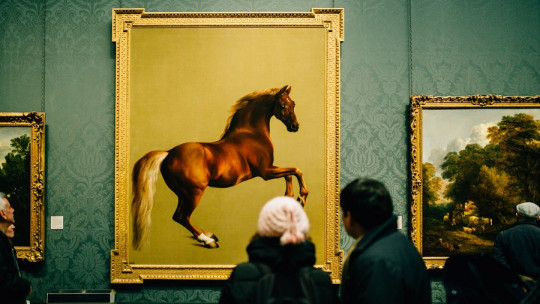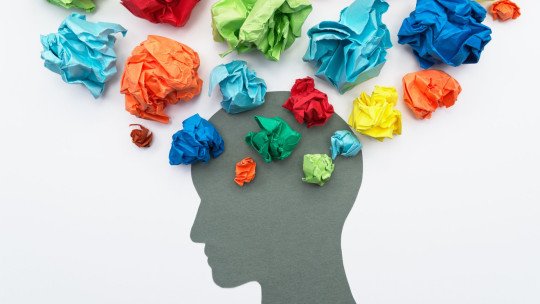The emotions that human beings experience continuously can be classified in various ways, with negative, positive and neutral emotions, as well as being classified as basic or advanced emotions. To all this we can add a classification of emotions that may be less known than the previous ones and these are aesthetic emotions.
Aesthetic emotions have been defined as the emotional response of people to beauty, to any kind of beauty such as a work of art or a landscape, with the possibility that these emotions can be of a different nature (p. For example, experiencing positive emotions before “The Starry Night” by Van Gogh or sadness before the painting of “The Execution of Torrijos and His Companions on the Beaches of Malaga”).
In this article We will see what aesthetic emotions consist of and we will also mention some research that has been carried out in this regard.
What are aesthetic emotions?
Aesthetic emotions have been defined by Rafael Bisquerra, emeritus professor at the University of Barcelona, as people’s emotional response to beauty, to any kind of beauty In this sense, beauty can refer to a specific landscape, a work of art, or a person, so that when viewing or experiencing them a strong emotional impact has been produced.
Where aesthetic emotions have been studied the most has been in terms of the reactions produced before certain works of art (for example, before the painting “Las Meninas” by the painter Diego Velázquez, the painting “The Birth of Venus” by Sandro Boticelli or the sculpture of “David” by Michelangelo, among others). However, these emotions can transcend works of art, so that the emotional experience of beauty can be experienced towards more things and beings (for example, a sunset, views from the top of a mountain, etc. ), being common for them to produce pleasant emotions.
However, heAesthetic emotions are not always positive and pleasant, since they can also be negative and unpleasant For example, if we contemplate any of the black paintings by Francisco de Goya such as the painting of “Saturn devouring his son” we could feel various negative aesthetic emotions such as anger or fear, among others; although we could also experience aesthetic emotions of a more neutral nature such as surprise.
Of course, each particular case of the spectators can greatly influence depending on various factors such as their sensitivity, their perspective, their way of understanding what they consider the artist has intended to capture, the meaning that the work provides for each person, among other things; in the end the aesthetic emotions that are experienced They depend on the particular perspective of each person so we can understand that this type of emotions gives rise to a wide range of emotional experiences, so they are quite diverse.
Due to all this variety at the emotional level that aesthetic emotions represent, there has also been a wide diversity of opinions on the matter within the field of psychology and branches related to them, with several defenders of this emotional phenomenon as well as others who have positioned themselves in against. In any case, below we will see some research that has been carried out on aesthetic emotions.

Research on aesthetic emotions
Aesthetic emotions are a phenomenon that today does not have as much research compared to other types of classifications of emotions or other fields of research within psychology, which is why they were quite unknown until quite recently.
The great mystery lies in the need to investigate in order to understand under what conditions and how various aesthetic emotions can be awakened through visual, artistic, scientific, sports, etc. manifestations.
However, there are some important authors who have validated the existence of aesthetic emotions such as Dickie (1974), Beardsley (1982), Wreen and Callen (1982), Lazarus (1991), Hjort and Laver (1997) or Levinson (1997). , among others, it is also worth highlighting the psychologist Rafael Bisquerra, who has focused his studies since the 90s on emotional education.
Levinson mentioned that aesthetic emotions had not received sufficient validation within art theory and furthermore they have not received sufficient support in this area; However, positive emotions have been related to the appreciation of works of art, including those of fascination, admiration or pleasure when contemplating quality works.
Lazarus, on the other hand, stated that there was a discrepancy between the tension and excitement that were present in an ordinary emotion versus the aesthetic appreciation that led to a state of calm when a person was contemplating a work of art, therefore that this would justify the consideration of the existence of aesthetic emotions.
Aesthetic emotions, as we said previously, go beyond the contemplation of a quality work of art, beauty or what is interesting to us in some sense; and it is that people can experience aesthetic emotions when receiving an award that they consider important, when achieving a goal that had cost us a lot of effort to achieve, when reading a poem that touches our sensitive fiber, when listening to music, when contemplating some works architectural, when watching a play or a movie, etc.
They can also experience shared aesthetic emotions in various situations such as, for example, when we see the players of the sports team we follow win a trophy, or when our favorite tennis player wins a Grand Slam tournament and we see their excited face as they celebrate it, in a way that manages to spread those emotions to their followers.
In all of the previous cases and many more, you can experience various emotions that, from a psychological perspective, may have characteristics similar to aesthetic emotions, so they could be considered as such.
Relationship between aesthetic emotions and education
In the field of education, whether in subjects of artistic expression, art history, physics, chemistry, mathematics, philosophy, social sciences, biology… it would be interesting to try teach them in a way that encourages the experimentation of aesthetic emotions by students so that they enjoy throughout the learning process and thus increase their interest in learning. This would be a way to motivate students, since otherwise, if they consider that the subjects are not meaningful to them, it will be more difficult for them to be motivated to study.
Starting from this perspective, it would be important to take into consideration the teaching of emotional education as a transversal topic that should be taught as a subject or included in some existing ones at all levels of educational teaching, ranging from preschool to high school.
Emotional education could include content and strategies focused on aesthetic emotions and the practice of certain social skills and competencies that are important for everyday life, because Many times, students who suffer from a psychological problem or difficulty have certain difficulties understanding and regulating their emotions as well as the need to work on certain aspects at the level of social skills and life skills.
Perlvosky mentioned that both language and emotions are forms of abstract representation and that it is cultures that facilitate the development of these emotions, with language being the mechanism that makes them accessible to our knowledge.
Thus,When one has not received an education in the field of emotions, including aesthetic emotions, the subjective perception of emotions is very poor this being the reason why so few words are used to describe what we feel, demonstrating the need for emotional education in the school context.
In short, one of the remains of the educational system at all levels would be to provide quality teaching in the field of emotional education and some basic notions in the field of psychology such as emotional regulation, the management of certain social skills and those that are important to face certain everyday remains and depending on the evolutionary stage in which the students are.









